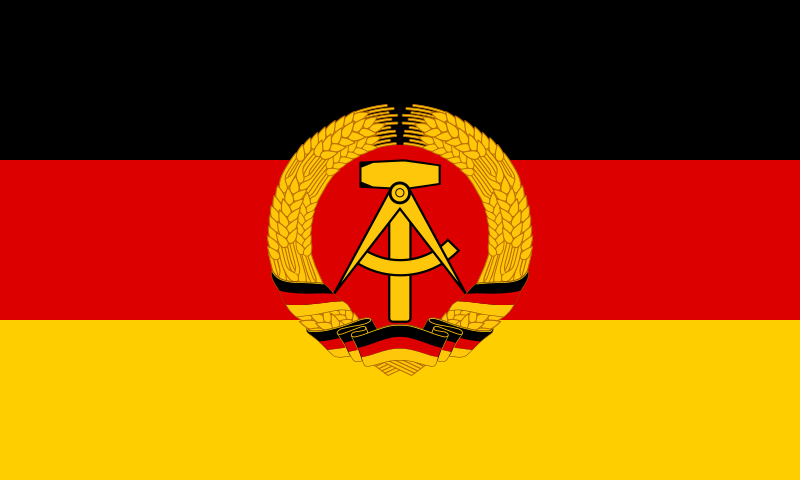The state has a monopoly on violence. However, abusive repression harms government credibility and alienates public support in the long run. A more subtle and effective way to exercise power is to surveil the population and to prevent open manifestations of discontent.
This article analyzes the case of the of the German Democratic Republic’s (DDR) Ministry for State Security (MfS), also known as the Stasi. The thesis is that an effective surveillance regime makes the use of open violence less urgent because the population is nudged to discipline itself.
Shield and Sword of the Party
A shield and a sword form the symbol of the MfS, which is modeled on the emblem of the Cheka, the Soviet secret police. Discipline and loyalty to the Socialist Unity Party (SED) of the DDR were the core values of the Stasi. Members of the secret police saw themselves as first-class comrades who could make use of surveillance, propaganda, and psychological terror to secure the power of the communist regime.
One of the defining moments of the Stasi’s history was the general strike of June 17, 1953, which sparked widespread protests among the East German working class. The MfS failed to foresee the turmoil and had to repress it with the help of Soviet tanks and the imposition of martial law. Since the incident, the mission of the Stasi became to surveil society to prevent new open manifestations of dissent against the ruling of the SED.
Relentless Privacy Violations
The MfS developed one the most pervasive surveillance apparatuses in human history. In 1981, Erich Mielke, the head of the Stasi from 1957 to 1989, stated:
In its constant effort to clarify “who is who” the MfS—with its chekist forces, means and methods—has to identify people’s true political attitudes, their ways of thinking and behaving . . . to clarify means . . . providing an answer to who is an enemy; who is taking on a hostile and negative attitude; who is under the influence of hostile, negative and other forces and may become an enemy; who may succumb to enemy influences and allow himself to be exploited by the enemy; who has adopted a wavering position; and who can the party and the state depend on and be reliably supported by.
Many DDR citizens collaborated actively with the MfS. In 1989, near the end of the communist regime, the Stasi employed about ninety-one thousand people, or one out of every 180 residents. After 1968, the MfS relied heavily on unofficial collaborators, whose role was to report every major and minor sign of resentment and resistance against the SED. Unofficial collaborators were recruited after being carefully surveilled by the MfS to ensure total loyalty to the regime. They were well trained and used fake identification to infiltrate workplaces and neighborhoods. Among the 180,000 unofficial collaborators employed by the MfS in 1989, four thousand sneaked into opposition groups to spread false rumors and generate chaos. The case of Wolfgang Schnur is emblematic of the…
